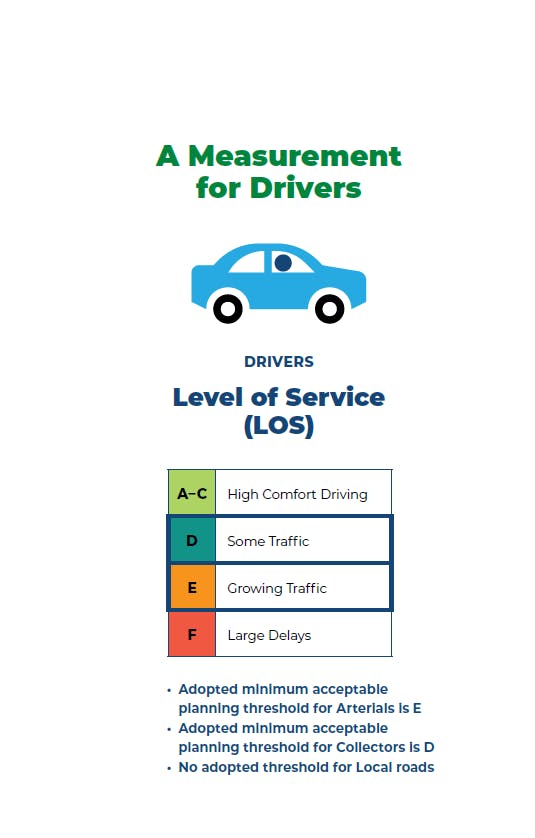Livable Streets Performance Measures
Share Livable Streets Performance Measures on Facebook
Share Livable Streets Performance Measures on Twitter
Share Livable Streets Performance Measures on Linkedin
Email Livable Streets Performance Measures link
In September 2021, ACHD adopted the “Livable Streets Performance Measures”, which outlined metrics and procedures to measure the experience of users of various transportation modes. After three years of implementation, ACHD conducted an evaluation in summer 2024 of these measures to identify areas of improvement; this document reflects the updated measures that came from this evaluation.
What's changed?
For Bicycle Level of Traffic Stress (BLTS)
- Roadway pavement condition is now included as an adjustment factor for mixed traffic.
- Bike lane tables now incorporate average daily traffic (ADT).
- Bike lane widths have been simplified.
- Adjustment factors have been introduced to reduce BLTS on bike lanes.
- New adjustment factors are identified to increase or decrease stress across all tables.
- Separate tables are provided for multi-use paths (MUP) and separated bike lanes.
- Unsignalized intersections have been updated to align with the The Federal Highway Administration (FHWA) guidance and include additional safety countermeasures.
- Unsignalized and signalized intersections now consider ADT.
- Roundabouts include an adjustment factor for ramps leading to MUPs.
- Signalized intersections now include factors for the approach leg; bicyclist left and right turns are evaluated in addition to straight movements.
For Pedestrian Level of Traffic Stress (PLTS)
- Roads with sidewalks on both sides default to LTS 1 (other factors may increase LTS).
- Sidewalk buffer scoring now considers roadway speed rather than the number of travel lanes.
- “Low volume” streets are now defined as those with <1,500 ADT and speeds ≤25 MPH for adjustment purposes.
- Buffers with a “vertical element,” such as street trees, bollards, etc., reduce LTS.
- Sidewalk condition removed from scoring; it is now part of the Americans with Disabilities Act (ADA) inventory and prioritization.
- Sidewalk width is now removed from scoring and integrated into adjustment factors instead.
- Unsignalized intersections are updated to reflect FHWA guidance and safety countermeasures.
- Unsignalized intersections now consider ADT.
- ADA factors have been removed.
- Pedestrian Hybrid Beacons (PHB) and full pedestrian signals are removed from the “signalized” table and added as adjustment factors for “unsignalized” intersections and crossings.
- Additional countermeasures for signalized intersections include protected phasing and curb geometry adjustments.
Page last updated: 05 Dec 2024, 02:37 PM






